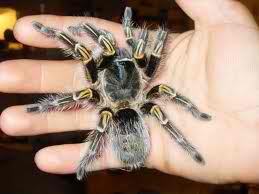Brachypelma Boehmei is also known as Fireleg tarantula These tarantulas prefer semi-humid climates, and are obligate terrestrial burrowers. As with all closely related tarantula species, they defend themselves with urticating hair when provoked.This species of tarantula has a slower growth rate than many of the larger South American tarantula species.This specie makes a popular pet due to its docility and vivid colors
to be updated
| Tarantula Information Brachypelma Boehmei | |
| Regions Found: | Deserts of Mexico |
| Class: | Terrestrial. Likes to hide under tank furniture. |
| Longevity: | 4-5 years above |
| Adult Size: | 5-6inch |
| Temperament: | Skittish but docile |
| Urticating Hairs: | Tend to be hair kickers |
| Venom Potency: | Unknown |
| Brachypelma boehmei Housing Requirements | |
| Tarantula Housing: | Floor space is more important than height, a deep substrate should be provided for burrowing. A good retreat is also required. |
| Temperature: | Between 26 to 30°C |
| Humidity: | 65-80% |
| Special Requirements: | Dry substrate. |
| Brachypelma boehmei Diet | |
| Livefood insects such as crickets, mealworms, superworms, houseflies and other Small insects | |
to be updated






























